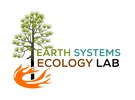|
The number of wildfires and acres burned by wildfires are the most common metrics used to report current fire season statistics. When an especially large fire is burning, it captures media and public attention. However, fire size is a poor measure of impact.
Large wildfires represent only 2-3% of all wildfires in the US but burn over 90% of the area. As such, they have a disproportional impact on firefighting costs and ecosystems. Extremely large fire events (> 40,000 acres), sometimes termed megafires1 are mostly associated with extreme fire weather and impacts. Not all large fires are equally impactful on society. For example, the 2011 Wallow Fire burned over 500,000 acres in Arizona and New Mexico with property damage estimated at $109 million. The 2018 Camp Fire, which burned just over 150,000 acres, caused an estimated $16.6 billion in losses and killed at least 85 people. Fire Severity and Ecosystem Impacts Historically, large fires were a common occurrence throughout the western US. Due to fuel buildup from long-term fire deficits in the 20th century, fires are burning much more severely today with severe consequences to human communities and ecosystems. To assess fire impacts to ecosystems and important values - recreation, clean water, carbon sequestration and timber production – we need information about how severely fires burn. The Monitoring Trends in Burn Severity program uses pre- and post-burn satellite imagery to map changes in the reflectance of soils and vegetation following fire. Changes in reflectance have been calibrated with fire severity and are generally classified as high, moderate, low, and unburned/low severity. Recent trends in forest fire severity are alarming2,3. Many of our nation’s old and mature forests are burning in large high severity fires. On dry sites, high severity fires may be wiping forests permanently off the map to be replaced by grasslands or shrublands. On many sites throughout the western US, tree regeneration is challenged by warm and often drier summers. Appropriate Metrics for Wildfire Impact Viewing wildfires in terms of impacts to communities and ecosystem services is a better way approach to differentiating between wildfires that have negative impacts for society and those that have little impact to society and are good for ecosystems. Recommended terms:
References: 1 Linley, G.D., Jolly, C.J., Doherty, S. et al. 2022. What do you mean, ‘megafire’? Global Ecology and Biogeography. https://doi.org/10.1111/geb.13499 2 Parks, S. A., and J. T. Abatzoglou. 2020. Warmer and drier fire seasons contribute to increases in area burned at high severity in western US forests from 1985–2017. Geophysical Research Letters.’ https://doi.org/10.1029/2020GL089858 3 Hagmann, R.K., Hessburg, P.F., Prichard, S.J. et al. 2021. Evidence for widespread changes in the structure, composition, and fire regimes of western North American Forests. Ecological Applications 31: e02431. https://doi.org/10.1002/eap.2431
0 Comments
|
Details
Archives
October 2023
Categories
All
|

 RSS Feed
RSS Feed